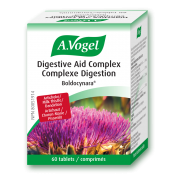What is stomach pain and where is located?
When assessing stomach pain it is important to know the exact location of the pain, the onset (sudden vs. longstanding), the character (sharp, dull, burning), the intensity (“worst pain ever” vs. “I can manage”) as well as associated symptoms like fever, nausea, sweating, fainting, etc.
What is stomach pain and where is located?
Some people associate the stomach with the anatomical region deep below the belly button. While this is not quite accurate, it is a common area where pain and discomfort are experienced. The abdomen is split in various quadrants: if you are to draw a cross or a “plus” sign over the abdomen, you end up with two upper regions (upper left and upper right), and two lower regions (lower left and lower right). For simplicity, I’ll use this four-quadrant method, but there is another more elaborate method.
The four-quadrant method
Underneath each quadrant sits one or several organs, and pain over that region may be indicative of a dysfunction in that organ. For example, the upper right quadrant is associated with liver and gallbladder, so commonly, gallstones elicit pain in this region; the upper left can be associated with the pancreas, spleen, stomach; lower right is the cornerstone of the appendix; lower left can indicate diverticulitis. While these are good guides they’re not very specific and much overlap exists.
For example, lower abdominal pain can be indicative of menstrual cramps, but also pelvic inflammatory disease, ectopic pregnancy—and to be less ominous—a great ab workout! Actual “stomach” pain is experienced in the chest area very close to the heart; hence “heartburn”. Nevertheless, the location of the pain can give the clinician a very good idea of the nature of the condition in order to act accordingly.
When pain occurs…
Pain occurs when injury, trauma, infection, inflammation (think gluten intolerance), biochemical and/or bio-mechanical (e.g. pressure, stretching, contraction) changes occur in or around the organs triggering the nerves that supply these organs to fire off. The organs themselves don’t experience pain per se. The pain you feel is on the skin, and this is because those same nerves that supply the organs have “sensory” branches on the patch of skin immediately superficial to them (though some variation does exist).
For example, when gas is accumulated in the intestines, depending on where it is trapped, this stretches the tissue, which in turns make the nerve cells fire off and you feel pain over this area. The intensity of pain your experience may also depends on your own subjective perception. Pain is a highly emotional state. This is why some people tolerate more pain than others. Nevertheless, it’s always a discomforting state.
What are the triggers of abdominal pain?
As I mentioned, there are many reasons why you may experience sudden abdominal or stomach pain, and their nature depends on the location of pain, onset, intensity/severity and other factors. These are some common triggers:
- Pregnancy – if you are a woman of childbearing age, acute, intense lower abdominal pain may also be indicative of an ectopic pregnancy and needs to be ruled out asap.
- Appendicitis – also lower abdominal pain, usually lateralized to the right side. Pain is usually sudden, very sharp and motions that engage flexion at the hips can exacerbate.
- Bowel obstruction – varies in location (depends on the blockage), swollen abdomen, tender to touch; can present with fever and sweating.
- H. pylori – culprit in stomach and duodenal ulcers; pain can be sharp and/or burning and can be alleviated or exacerbated by food intake.
- Cholecystitis – gallstones, pain is usually on the upper right quadrant, but can extend to the shoulders. Fever and nausea can present with it.
Other triggers can include medication (e.g. overuse of NSAIDs like ibuprofen) for pain relief, inflammatory bowel syndrome (IBS), and/or inflammatory bowel disease (IBD) e.g. Crohn’s. Please be aware that there are many other conditions that can present in this manner. It is important to identify the symptoms and act fast. Don’t feel embarrassed if you have to call 911 or ask for help; your health matters most!
A more extensive list: cholelithiasis, cholangitis, colitis, diverticulitis, abscess, hepatitis, mass, pneumonia, embolus, nephrolithiasis, pyelonephritis, myocardial infarction, pericarditis, esophagitis, gastritis, peptic ulcer, pancreatitis, aortic dissection, mesenteric ischemia, angina, appendicitis, IBD, IBS, ectopic pregnancy, fibroids, ovarian mass, torsion, pelvic inflammatory disease, herpes zoster, muscle strain, hernia, peritonitis, narcotic withdrawal, sickle cell crisis, porphyria, heavy metal poisoning.
Symptoms associated with food poisoning are often accompanied by vomiting, and/or diarrhea alongside abdominal pain. In these instances it is very important to stay hydrated.
What can be done?
First thing is first: identify whether this is an emergency or not. If the pain is sudden and nothing like you’ve experienced before don’t hesitate to call for help. Ask a family member for their opinion and to monitor your state, and when in doubt, call EMS.
If the condition is chronic, you’ve been medicated and nothing seems to alleviate it, then perhaps it’s time to speak with a licensed naturopathic doctor about your options.
If the pain is chronic and common, but has worsen, seek medical attention as early as possible—and yes, in most of Canada this can include your naturopathic doctor. However, be aware that there is no “natural alternative” for treating a medical emergency.
There are, however, complementary ways to treat many (if not most) non-life threatening triggers of abdominal (stomach) pain. If you are certain that your abdominal (stomach) pain is due to bloating because of something you ate recently and did not sit well, then there are carminative herbs that can help.
These are plants that help with passing gas and digestion and include fennel, peppermint, star anise, coriander, etc. Add an anti-inflammatory/antioxidant like turmeric, milk thistle, boldo and you may be onto something!





